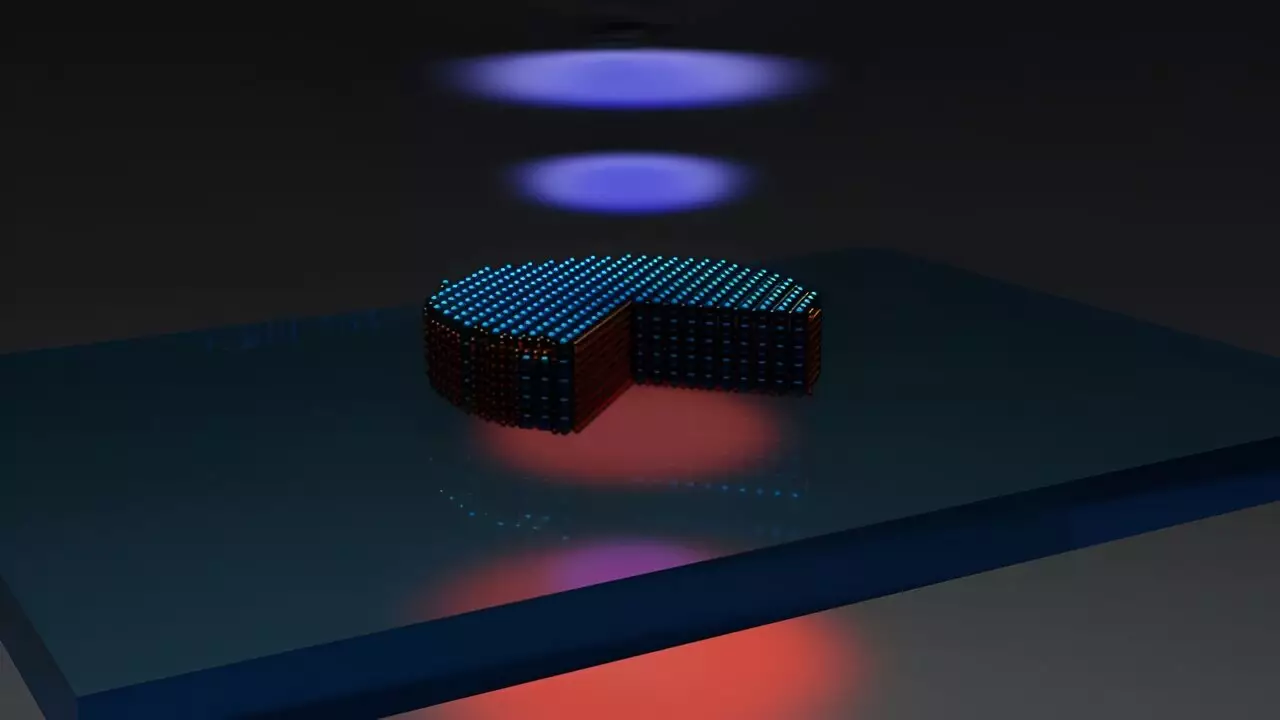The burgeoning field of photonics stands at the intersection of science and technology, engaging with the vast potential offered by light-matter interactions. These interactions fuel significant developments in various sectors including communications, medicine, and spectroscopy, functioning as the backbone of laser and quantum technologies. Recent research at Chalmers University of Technology, focused on innovative approaches combining nonlinear and high-index nanophotonics, can potentially redefine our understanding of photonic applications.
Integration of Research Disciplines
At the core of this recent breakthrough is a nano-object designed in a disk-like shape, which effectively manifests the dual principles of nonlinear optics and high-index nanophotonics. Dr. Georgii Zograf, the lead researcher on the project, voiced the sense of astonishment and satisfaction that accompanied their success: “The disk-like structure is not just minuscule—being much smaller than the light spectrum—but it also acts as a remarkably efficient converter for light frequencies.”
The numbers are staggering; the efficiency of this nanodisk surpasses that of traditional, unstructured materials by a factor that could exceed 10,000 times. Zograf emphasizes the pivotal role of nanostructuring in achieving such profound enhancements in optical conversion efficiencies. The implications of this finding are far-reaching, promising more compact, efficient optical devices with versatile applications.
Central to the performance of the nanodisk is the utilization of transition metal dichalcogenides (TMDs), specifically molybdenum disulfide. This atom-thin material showcases exceptional optical abilities, particularly at room temperature, but its structural characteristics pose a unique challenge. Stacking layers of this material risks compromising the very nonlinearity that researchers hope to exploit.
Zograf elaborates on this issue, noting, “For the first time, we successfully created a nanodisk with specially stacked molybdenum disulfide that retains a broken inverse symmetry—essential for maintaining optical nonlinearity.” The strategic engineering undertaken allows each layer within the nanodisk to preserve its nonlinear optical attributes, resulting in an amplified effect that enhances the overall capabilities of the material.
The nanodisk exhibits a high refractive index of approximately 4.5 within the visible range of light. This significant factor permits unprecedented compression and manipulation of light within the medium, enabling effective localization of electromagnetic fields. One notable consequence of this ability is the generation of second-harmonic light—a phenomenon crucial for various high-energy laser systems.
“By integrating extreme nonlinearity with a high-index medium in a compact design, we present a groundbreaking advancement in photonic materials,” states Zograf. Indeed, the promising characteristics of this nanodisk pave the way for future directions in photonics research, particularly in applications that require nonlinear optical properties in smaller packages.
The researchers at Chalmers project that this nanodisk could catalyze further innovations in photonics. The miniaturization of photonic devices holds considerable implications for fields ranging from quantum computing to advanced optical circuits. Professor Timur Shegai emphasizes this point, noting that their object represents a drastic reduction in size—about 50 nanometers as opposed to conventional devices, which can measure centimeters.
“The capacity to harness TMD materials’ unique properties and combine them within diminutive structures promises exciting possibilities for future experimentation in both classical and quantum nonlinear nanophotonics,” adds Shegai. The path forward may involve the introduction of nanodisk arrays and metasurfaces, moving the field towards a realm of advanced integration and functionality.
A Milestone in Nanophotonics
Conclusively, the research team regards this achievement as not merely a step, but a substantial leap towards integrating advanced nonlinearity and high refractive index materials into photonic applications. The challenges in fabricating an efficient and effective nanodisk structure may have just begun to unveil its intricacies and potential. As Shegai remarks, “We are only just scratching the surface,” the realization dawns that the future of photonics could indeed lie in the innovative exploration of these near-atomic scale materials. The next phases of research promise to uncover even more applications, demonstrating that light, with its myriad interactions and properties, continues to be a powerful force driving technological innovation.


Leave a Reply